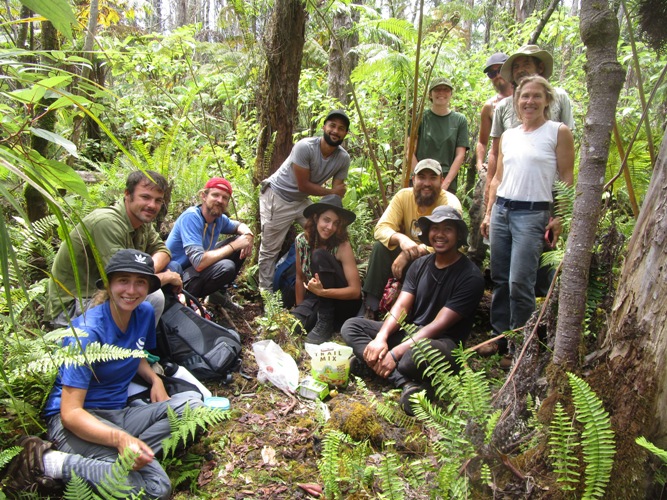Quarterly HER Volunteer Work Party
Hawaiʻi Environmental Restoration

Hawaiʻi Environmental Restoration
About the organizer
Our primary project focuses on the restoration of Keauʻohana State Forest Reserve, the largest and most intact native lowland rainforest remaining (<1,000ft) in Hawaiʻi State. Of five State Forest Reserves set aside for conservation in 1903, Keauʻohana is the only Puna reserve in which the original forest composition has not been replaced by invasive species due to lack of management. Since June of 2014, Keauʻohana has undergone an intensive restoration process that has focused on the control of invasive plant species, and the planting of native species on ~30 acres of the most biodiverse portion of the reserve.
Keauʻohana rainforest is also a living classroom for many local and international volunteer students, community groups and individuals to learn about native forest restoration, and about general Hawai’i plant issues and solutions. HER participation in community outreach events, public presentations in schools and with community groups also educate people on how they could help support the lowland environment by making wise plant choices for sustainable living in their own lives.
Quarterly HER Volunteer Work Party
Hawaiʻi Environmental Restoration

Hawaiʻi Environmental Restoration
About the organizer
Our primary project focuses on the restoration of Keauʻohana State Forest Reserve, the largest and most intact native lowland rainforest remaining (<1,000ft) in Hawaiʻi State. Of five State Forest Reserves set aside for conservation in 1903, Keauʻohana is the only Puna reserve in which the original forest composition has not been replaced by invasive species due to lack of management. Since June of 2014, Keauʻohana has undergone an intensive restoration process that has focused on the control of invasive plant species, and the planting of native species on ~30 acres of the most biodiverse portion of the reserve.
Keauʻohana rainforest is also a living classroom for many local and international volunteer students, community groups and individuals to learn about native forest restoration, and about general Hawai’i plant issues and solutions. HER participation in community outreach events, public presentations in schools and with community groups also educate people on how they could help support the lowland environment by making wise plant choices for sustainable living in their own lives.
